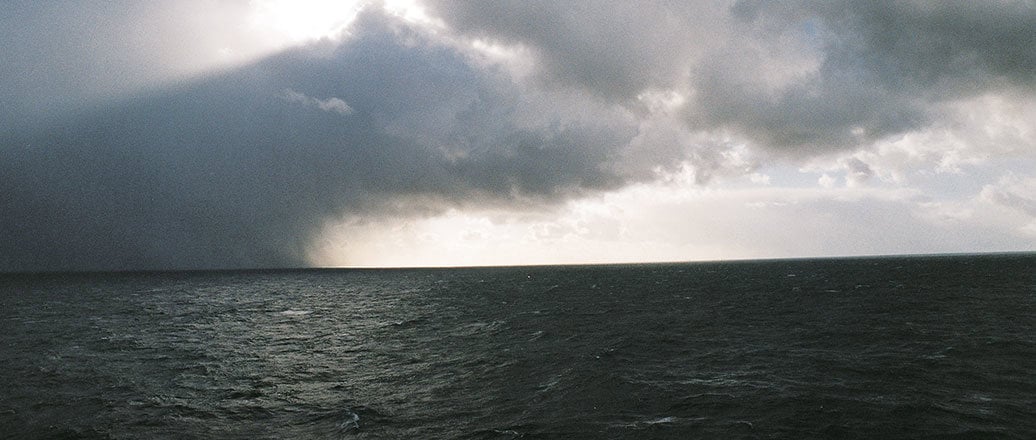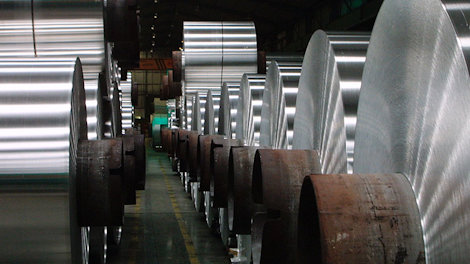The North Sea has been Hydro’s home ground for nearly 40 years. This is a challenging arena offering plenty of opportunity to gain experience. Today we also apply our expertise in other parts of the world. The development of expertise has been a key issue since the middle of the sixties when Hydro sent the first group of students to France to learn more about petroleum.
The North Sea with its tough climate and great water depths has always given scientists and engineers some of the greatest challenges in the industry. Developing these fields requires far more than basic geology, analysis and development technology; now that the major discoveries have been made, the requirements for expertise continue to grow.
Finding oil
Most of us know that oil and gas are formed from dead plants and animals that lived millions of years ago, but many have wondered how heat and pressure bring about this transformation, and how these hydrocarbons are kept in place, waiting to be found millions of years later. These are the very questions that geologists are concerned with, and to which they apply systematic methods.
First of all you need rock that contains the right content of organic remains, then you need rock that the hydrocarbons can flow into, and finally you need the right type of rock to prevent the hydrocarbons from flowing away.
Geologists are sometimes heard to say: “Yes, there has been oil here, but we are a few million years too late.” And it’s not just a question of finding the right kind of rock. It also has to be possible and profitable to produce the hydrocarbons it contains. All these factors provide interesting challenges for geologists and other scientists and engineers who work with oil and gas.
Seismic studies
Seismic charting involves sending sound waves down to the seabed and then registering the signals that are reflected back by the geological formations. These signals are processed in powerful computers, and the results are drawn up in a seismic chart. Geophysicists study this information to assess the geology of the area.
The interpretation of oil and gas discoveries is difficult. Once a discovery is made, there are new questions to be answered. How big is it? How much of it can be produced? What will its lifetime be? These questions can only be properly answered if the seismic data is of top quality and interpretation technology is combined with a thorough understanding of geology.
Recovering the resources
Technological advances allow more and more oil to be produced from discoveries that would not have been considered commercial a few years ago. Technological innovation makes it possible to adjust upwards the estimates for how much of a discovery can be recovered. And smarter solutions make it possible to reduce development costs.
The Oseberg field, which is the first oil and gas field for which Hydro is operator, is around 130 kilometers west of Bergen. It is made up of three platforms (Oseberg A, B and D), which are linked by bridges in the southern part of the field, and Oseberg C, which is 14 kilometers north of the field centre.
Oseberg A is a concrete platform with process equipment and living quarters, while Oseberg B has a steel jacket with drilling and injection equipment. Oseberg D is a steel platform with gas processing and export equipment. Oseberg C is an integrated drilling, accommodation and production platform with a steel jacket.
The technical solutions chosen for Oseberg have led to a very positive cost situation: just over NOK 5 per barrel produced oil. The development of horizontal drilling technology has been particularly important. In 1983 it was thought that the field would need 14 subsea well frames and that the drilling range would extend for 3.3 kilometers. The drilling of horizontal wells up to 9.3 kilometers long has made it possible to manage with three subsea well frames.
Several multi-branch wells have also been drilled from Oseberg C. This method involves drilling a number of horizontal wells from a single vertical well.
Unusual solutions
Several untraditional solutions have helped to make Oseberg a successful project. Production wells were predrilled while the first platform was still under development. This made it possible to achieve 80 per cent production capacity just one month after the start of operations. In the start-up year alone the value of the additional drilling amounted to more than NOK 5 billion.
Test production with the floating test production vessel Petrojarl was introduced on Oseberg. Long-term test production of the wells gave valuable insight into how the field could be developed in the best possible way.
When the pipeline system from Oseberg to the oil terminal at Sture north of Bergen came into operation in December 1988, it was the first time that oil produced on the Norwegian continental shelf was transported to Norway via a pipeline. The Norwegian Trench, which has a depth of 360 meters at the deepest, was regarded for many years as an insurmountable obstacle.
Separation in the well
Brage, which came onstream in 1993, is situated around 13 kilometers east of the Oseberg field centre. The Brage platform is an integrated drilling, process and accommodation platform with a steel jacket. According to plan, Brage should have passed peak production in 1998, but it has been possible to maintain full production considerably longer than estimated. Hydro has been highly successful with the application of a recently developed down-hole separator for horizontal wells. This makes processing on the platform unnecessary, which again saves costs, increases production and is more environmentally friendly.
Innovation
The Troll field is a case of having your cake and eating it too. This is a large gas field that also provides oil. Since 2000, Troll has been top producer in the Norwegian oil sector. The oil is recovered from thin layers in an area that otherwise mostly contains gas. It was possible to recover the oil in the Troll field profitably using horizontal wells. The first tests confirmed that production increased when wells were drilled horizontally rather than vertically. The subsea installation Troll Pilot is one example of how we took on a challenge at the outer limits of technology – and won.
The water injection unit has been in stable operation on the seabed since 2001. Subsea production means lower costs and environmental advantages as produced water is pumped directly back into the seabed.
The large gas field Ormen Lange is also a test of our ability to create results through innovation. Ormen Lange is the only really deep sea field in the Norwegian continental shelf. It is one thousand meters below the surface of the sea, with temperatures well below zero, strong subsea currents and a very uneven seabed.
Three dimensional virtual reality
In 1997, Hydro’s Research Centre in Bergen started to develop an advanced virtual reality system for the planning and control of production wells on Troll. A room has been set up at the centre where three of the walls and the floor function as enormous computer screens. Images of seismic data are shown on all the screens in stereo. There is room for up to eight users, who can see the images in three dimensions by means of stereo glasses.
This technology has been a great advantage in the planning of production wells, and has been in demand from other oil companies.
Updated: May 15, 2024






